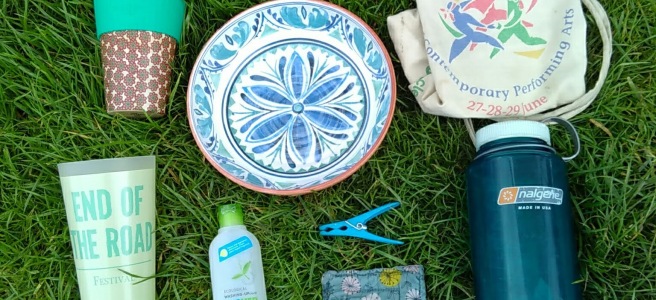This past weekend saw the first Glastonbury festival post pandemic. Now that the stages are silent, the cows have returned, the revellers are home and the more organised among them may even have made their way through the horror that is post-festival laundry. And as always, after the party comes the cleanup.
Glastonbury employs a small army of dedicated litter picking volunteers, and has made great strides this year in reducing the amount of single use material generated on site and recycling or composting its waste, but that hasn’t stopped the usual suspects from sharing a photograph of litter left in front of the Pyramid Stage taken in 2015 and claiming it was left after Greta Thunberg’s speech this year.

Allegations of hypocrisy do seem to be the current go-to argument for the anti-environmental movement at the moment, whether it’s claiming environmentalists leave litter, the ridiculous spectacle of Piers Morgan attacking every environmentalist he’s ever interviewed for owning electronic devices or wearing clothes that aren’t handmade or the pathetic manufactured furore a couple of years ago over Greta Thunberg herself eating a bread rollout of a *gasp!* plastic bag. And in an odd way this is strangely encouraging: the science is settled, we are having an impact on our planet and there are things we can do about that, so those who don’t want to make the necessary changes are left without arguments and have to fall back on personal attacks. And allegations of hypocrisy are a useful tool to attack us with, as the only way for your actions to be 100% consistent with your ethics is to not have any ethics at all: if you try to improve things the sheer magnitude of the problem means you could always be doing more, whereas if you don’t care no more will ever be expected of you. By living in a damaged, damaging society we have to make accommodations to it to survive, and even if it were possible to withdraw fully from the exploitative consumer capitalist system our species has created that would involve surrendering our chance to chance.
In the words of Julian Cope:
Those of us who aim high and fall short will always be hypocrites, while those without beliefs, ideals or any expression of concern gain commendation every time they show gentleness or perform the slightest noble act.
No one is 100% irreproachable in all of their actions, but some of us at least care enough to try our best which will always have more of an impact than someone who didn’t try at all.
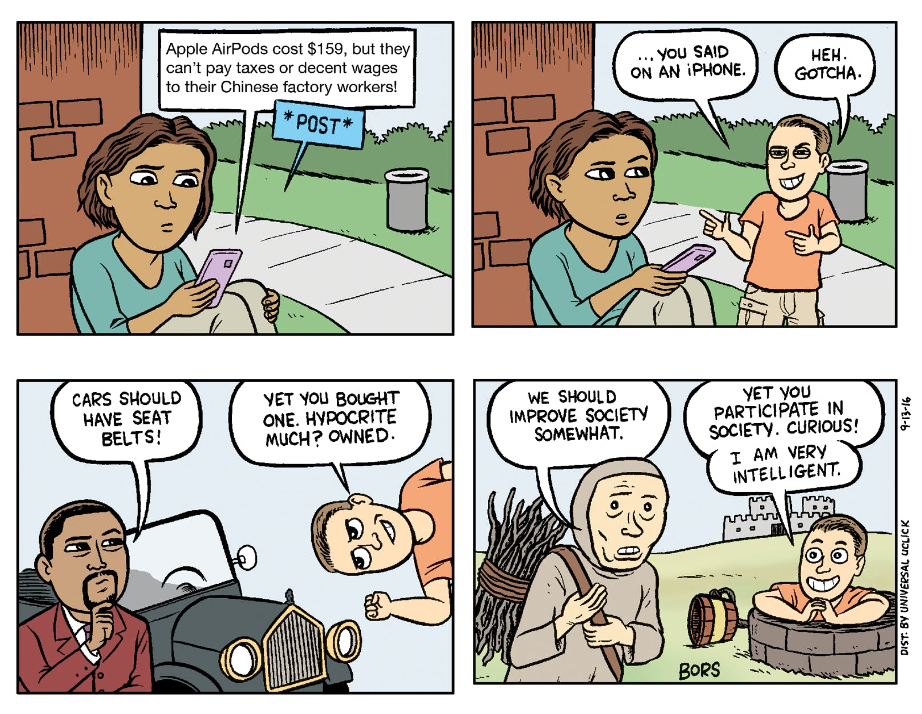
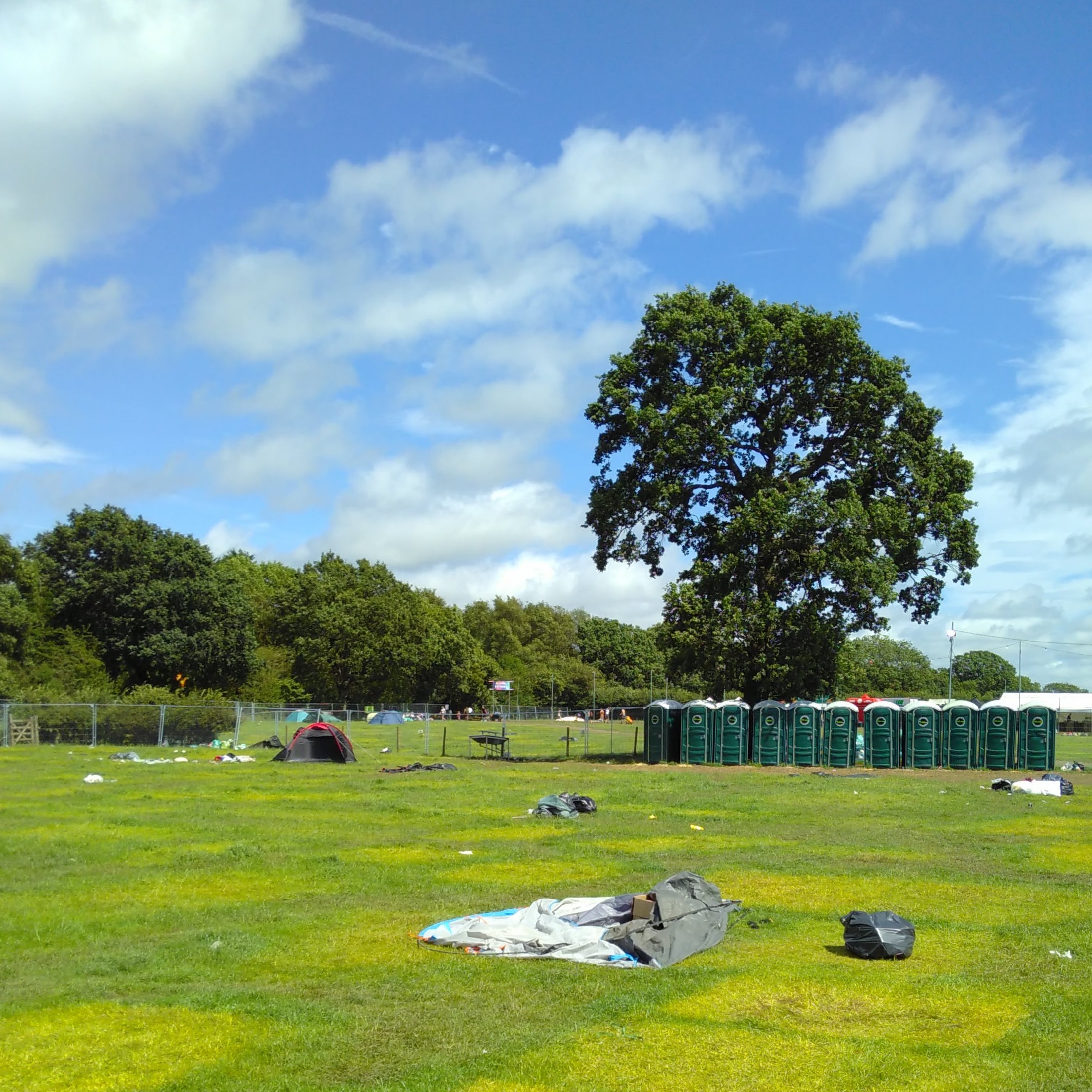
Allegations for hypocrisy aside though, the waste generated by festivals remains a significant issue. I took the photograph above in the summer of 2019, ironically at a festival with a strong focus on sustainability. In the same year the Association of Independent Festivals estimated that an astonishing 250,000 tents were abandoned in fields after music festivals every year, leading them to launch a campaign encouraging people to take their tents home with them. The world has changed a lot in recent years and an encouraging amount of progress has been made in sustainability awareness in many fields, so it’s probably too soon to tell whether this remains such a problem. Nonetheless there is doubtless still room for improvement, so I’ve compiled some tips below on how to minimise your environmental footprint while attending festivals.
Camping equipment
I’m assuming that if you’ve read this far you’re not the sort of person who would abandon their camping gear at the end of a festival, but if the thought of taking your tent down after an exhausting weekend feels too much why not hire a pre-erected tent that someone else will take down for you? Camplight reclaims abandoned tents that would otherwise end up in landfill and rents them out ready pitched at festivals, along with mattresses, sleeping nags and chairs. Unlike the boutique camping options offered in bell tents and yurts they’re surprisingly affordable with a basic pop-up tent starting at £36. I’ve used them myself when travelling light to the Green Gathering and found that as a bonus I ended up camped in a really lovely community of likeminded people.
If you’re not much of a camper and just need a tent for a festival weekend why not rent one? Tentshare is a specialist rental service hiring out tents and other camping equipment, Fat LLama is another peer-to-peer rental service and an increasing number of Libraries of Things are springing up all over the country.
If you do decide to invest in a tent of your own I would recommend buying a good quality second hand one , rather than a £20 supermarket one that will fall apart after a few trips. I appreciate that, due to wealth inequalities in our society, for some people a cheap, poor quality tent may be the only affordable possibility. But if there is any way that you can I would recommend spending a little more money on a tent that will last, and cost you less money in the long terms than a series of tents that only last a single outing.
You don’t have to spend hundreds of pounds to get a serviceable tent, indeed if you’re mainly planning to use it at festivals where hiking with something ultra lightweight isn’t a concern and there’s a non-zero chance that someone might trip over and cover it with baked beans, bodypaint or beer I’d recommend that you didn’t. You can get very good tents second hand by selecting “used” on ebay, or ex-display models from outdoor shops. The main thing you want to look for is something long enough and double-walled.
Cared for properly, a half decent tent will last forever. I bought my tent when I was eighteen, pretty much the only intelligent purchase of my teenage years, and it’s still going strong two decades later. Mould can be avoided by not packing it away wet if you can help it and airing it thoroughly as soon as you get home if you do have to. Rips can be fixed in the short term with Duck Tape and then using a proper tent repair kit when you get home, or even in extremis with a bike puncture repair kit. Poles can be replaced via Tent Spares.
I have had to reproof mine a couple of times using Nikwax spray-on reproofer, which has kept it completely waterproof. As nowhere I have lived since moving out of my parents’ home at 18 has had a garden large enough to erect a tent, the hardest part of the operation has been finding an outdoor space to spray it in. I’ve had to erect it in various public parks in order to do so, which I am aware is a privilege I have as a white middle class woman that may not be available to others. On every occasion I’ve had curious, friendly passersby asking what I was doing and even one person bringing his children to watch and learn. I suspect that had I been someone else putting up a tent in the park the response would have been more along the lines of calls to the police about dangerous vagrants.
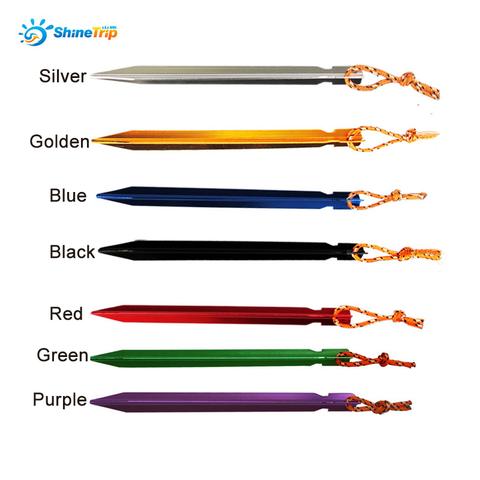
I try to replace the dull metal tent pegs that come with many tents with more colourful yellow or orange ones as I find these much easier to find when packing up. Tent pegs lost in the soil can lame both livestock and wild animals treading on them, and while Glastonbury employs a highly sophisticated system for extracting metal from the fields after the festival I suspect smaller festivals do not have the budget to do this.
I have used the original pegs on my allotment, an (in theory!) neater environment where they’re much less likely to vanish into the soil and are great for holding down mesh and netting. If you don’t have any use for them yourself I’d recommend offering them to any gardeners in your life or through Freegle, Freecycle (many local Freecycle groups are now on Facebook) or Olio for example.
Washing
While there can be something very liberating about not washing for women and those raised as female, who are taught that to be acceptable to be seen in public we must look perfect at all times, personally I enjoy feeling clean.
Festivals are increasingly providing showers, and all festivals will provide water from standpipes, so you can get a long way with soap, a flannel, and a peg to hang it on your guy ropes to dry. However wet wipes have long been a festival stalwart and will doubtless continue to be even as awareness increases that while they look like paper they are in fact made from non-biodegradeable plastic. There is hope however: Natracare have created thefirst ever wipes made from paper rather than plastic, which makes them not only safe to flush but compostable (which I first became aware of throughthis podcast). I’ve bought some and will be burying a few to find out how easily they compost, so expect a followup post in a year or so!
Moving on to personal cleaning products, camping and bushcraft made me completely reevaluate what I was using to wash with. Spitting toothpaste or rinsing soap directly onto the ground made me wonder what was going into the ground, so I switched to the least harmful products I could find when out camping, and then started wondering why I was willing to put more damaging products into the environment indirectly at home so switched there too. I use Kingfisher toothpaste and Faith in Nature shampoo and shower gel, although to be honest for short periods away like a weekend I tend to just wash in the Ecover washing up liquid I bring to clean my crockery. I know this is probably not great for my hair and skin, but it’s one fewer thing to carry. And my washbag comes from Crackpacs, and in a rather neat coincidence is made from reclaimed tents diverted from landfill.
One item I do consider a festival washing essential is a nailbrush – nothing will ruin you holiday faster than a stomach bug, and at events with portaloos and large numbers of people who are possibly not paying as much attention to personal hygiene as they would normally there is quite a high chance of catching one. Hand sanitiser will sterilise the surface of anything on your hands, but doesn’t remove any particles of dirt or really get under your nails so I am quite fastidious about proper handwashing with soap, water and a nailbrush, using a bowl as a basin if necessary. My nailbrush is just a 45p plastic one, I have tried using a wood and yucca fibre one from here but found it just went mouldy almost immediately and had to be replaced. Sometimes the plastic option is better if it results in less consumption over all.
Health and self care
While wearing long loose clothing and a large hat is a good way of avoiding sun exposure, certainly for me part of the point of going to festivals is to wear things you’d feel a right prat walking down the highstreet in, and this tends to involve a fair amount of exposed skin to cover in sunscreen.
Sunscreens come in two forms; mineral and chemical. Mineral sunscreens contain tiny particles of zinc or titanium dioxide and form a physical barrier over your skin that prevent UV rays from reaching the skin surface. Chemical sunscreens on the other hand contain UV-absorbing chemical that sink into your skin and soak up the damaging rays before they can harm you, and are the more popular form of sunscreen as they are more waterproof, need to be applied less frequently and feel less apparent on your skin.
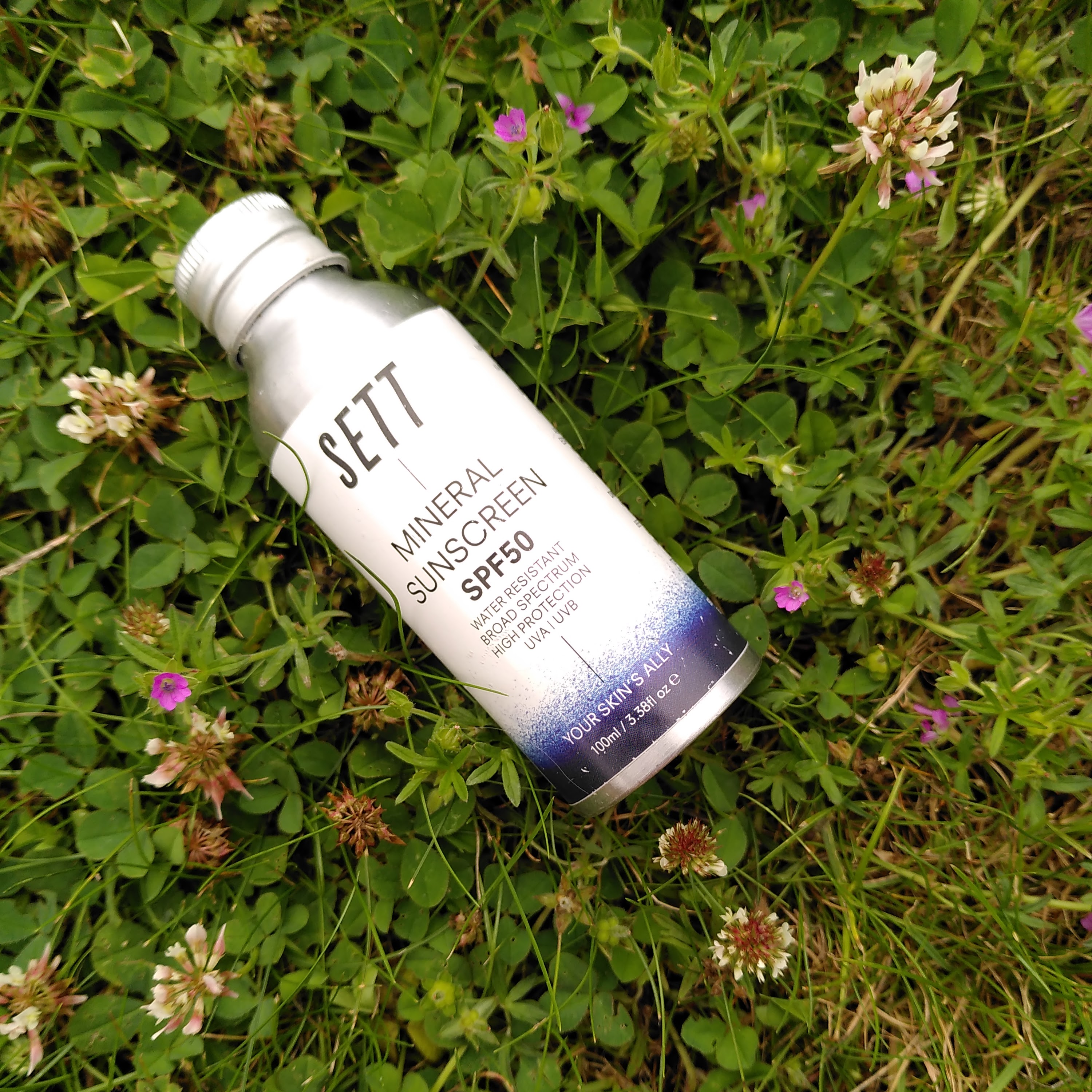
Unfortunately in recent years it has become apparent that one of the main ingredients of chemical sunscreens, oxybenzone, is highly damaging to coral reefs, being converted into a toxin in the presence of sunlight, and it is suspected that other chemical sunscreens may cause damage in the same way. For this reason Hawaii has banned the sale of oxybenzone-containing sunscreens, and while sadly I am unlikely to ever get the chance to swim in the sea off Hawaii given the shocking amount of untreated waste water the UK dumps into the oceans I prefer to use a less damaging mineral-based sunscreen.
The unfortunate downside of mineral sunscreen is that it leaves your skin with a distinctly chalky appearance. As a white woman I’m happy to live with this, but it’s much more of a problem for people with darker skin. (For whom sunscreen is important too. While melanin evolved to do a great job of protecting us from the levels of sun exposure we experienced in the pre-industrial past, no one’s skin provides enough sun protection to deal with the amount of UV exposure we currently get in mid-to-high latitudes thanks to the damage we’ve done to the ozone layer). Some pigmented mineral sunscreens do exist, but I’m not aware of any suitable for people of colour who it seems are once again an afterthought for the mainstream skincare industry. I hope that things change in the future, but in the end the best sunscreen choice is the one people will wear even if it’s not the most sustainable. Not only is the environmental impact of sunscreen likely to be insignificant compared to the impact of treating skin cancer, it’s never worth risking your health for the sake of sustainability.
Although we are lucky in the UK to have relatively few arthropod-borne diseases compared to other parts of the world, Lyme disease spread by tick bites can be devastating and there is still much less awareness of this danger than there should be among those organising outdoor events. An article I wrote for the Bushcraft Journal on Lyme disease awareness and prevention is available on the Jack Raven bushcraft blog here, and I would recommend that anyone planning on spending any significant amount of time in the outdoors learns to use a safe method of tick removal like a tick twister. You should at all costs avoid the dangerous “life hacks” that seem to proliferate on social media like irritating the tick with petroleum jelly, nail polish, rubbing alcohol or matches or cigarettes, in the hope it will “let go naturally” as these will just stress the tick and increase the chances it will vomit infectious material into the wound.
There are a lot of “natural” insect repellents out there, and unfortunately very few of them have any scientific evidence backing up their effectiveness. The exception is PMD, derived from the lemon-eucalyptus tree, which does appear to be highly effective including against ticks and is considerably less environmentally damaging than DEET. (Again though, I would always prioritise your health, and if you are going a bit further than a muddy field in the West Country to a malarious area you should absolutely use DEET.)
Above all though be aware of the possibility of Lyme Disease, and if you develop “flu-like symptoms” (an even vaguer phrase in the post-covid world than it was before) shortly after an event, and especially the characteristic bullseye rash (not present in all cases of Lyme disease, and harder to spot on darker skin) see a doctor and get tested as the sooner Lyme disease is detected the easier it is to treat.
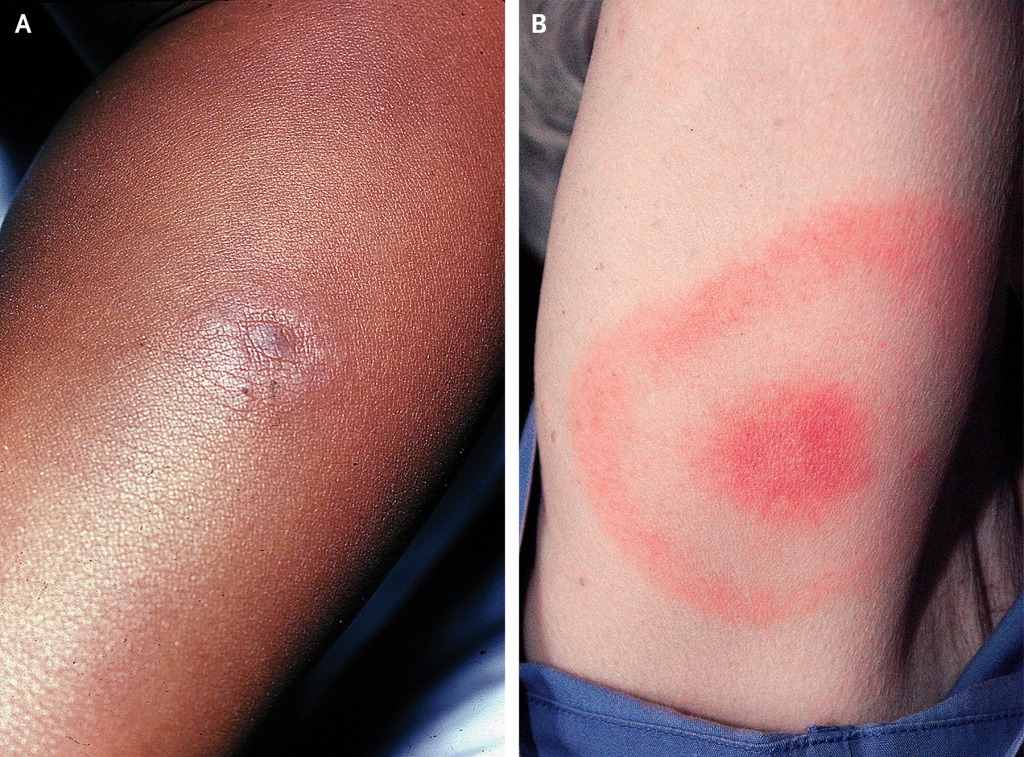
Eating and drinking
Just about all of us know by now that you can avoid single use water bottles and coffee cups by carrying reusable ones, but you can take this a step further by carrying a camping bowl and cutlery and asking stalls to serve your food directly into that instead of a takeaway container – every festival stall I’ve ever tried this at has been happy to do so. And most festival bars now serve drinks in reusable glasses which are returnable for a deposit.
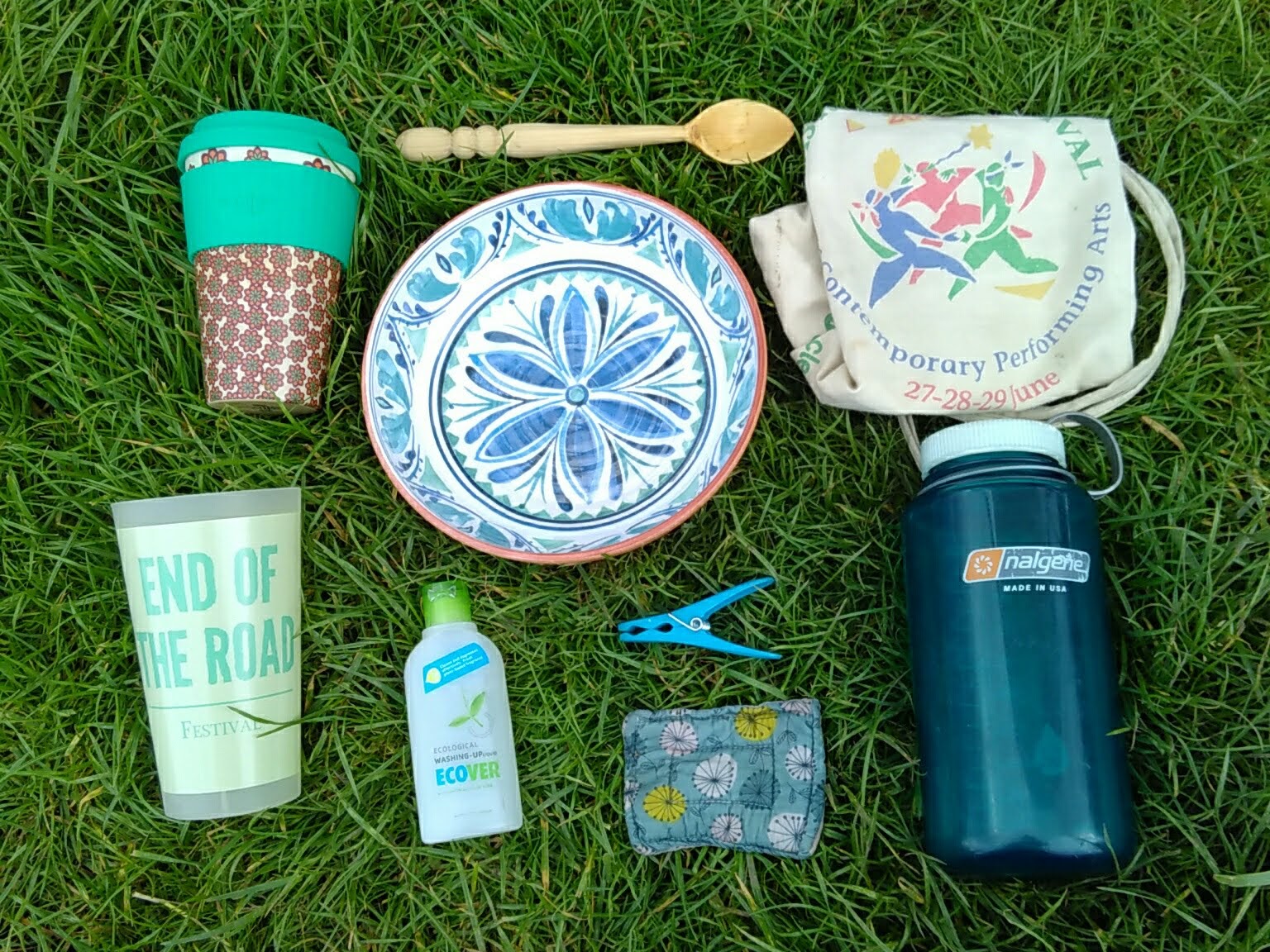
Finally, one of the most effective actions we can take to reduce our personal carbon footprints is to reduce our consumption of animal products, and festivals are the ideal time to do this because plant-based foods are often lighter and more practical and last far longer and more safely in a hot tent than meat or dairy products. I’m still traumatised by the experience I had back when I was still eating dairy, of the block of butter that turned so rancid over a hot bank holiday weekend that I eventually had to throw away the Tupperware I’d kept it in because I couldn’t get the smell out. Why not challenge yourself to eat plant-based for the duration of the festival – even if you don’t keep it up afterwards it’s still a small decrease in your overall consumption of animal products and probable more practical too.
Dressing up
Although glitter has traditionally been considered part of the festival experience, an increasing number of festivals are banning it as awareness grows that conventional plastic and metal glitter is a damaging microplastic, and that mica mining for some alternatives is both environmentally harmful and has a huge problem with child labour. A primarily plant-derived, less harmful alternative glitter is available here. It should be noted that to my knowledge this is the least environmentally damaging glitter currently on the market but currently only 92% of it is biodegradable (the cellulose-derived core core) and the remaining 8% is composed of an aluminium reflective layer and a plastic coating. However to their credit the manufacturers share this information on their own website rather than trying to cover it up and are working to develop a 100% biodegradable glitter. If glitter is important to you I would recommend taking a harm reduction approach and weighing up how important it is to you personally to completely eliminate microplastic traces and aluminium shards from the natural environment, versus supporting a company working to develop an a better option. If you do decide to skip the glitter this year, facepaint can be a fun, creative option.

Cigarette butts
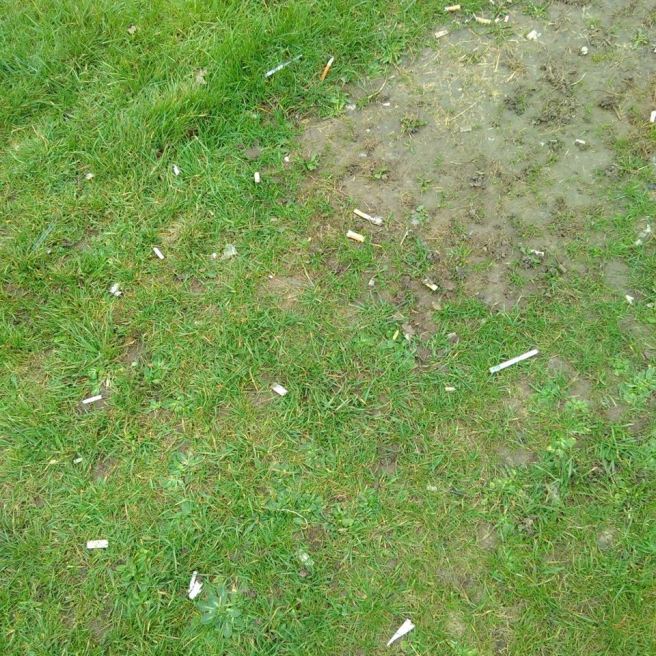
A patch of grass and bare earth strewn with a huge number of cigarette ends. Own photograph.
A huge source of festival litter that rarely gets discussed is cigarette ends. I took this photograph at the university where I work. The green spaces on campus look like this after every sunny day, and it really frustrates me how they’re dropped by intelligent, socially aware students, often drinking from reusable containers with metal straws as they smoke but completely unaware that the butts they casually discard on the grass are doing even more harm.
Cigarette butts do not biodegrade, leach the toxic and carcinogenic chemicals they absorb from smoke into groundwater, can choke wildlife and wash into watercourses. I presume that by now everyone knows that smoking is harmful and tobacco companies are some of the most unethical out there, and the ideal solution would be for people to stop smoking the damn things, but if you must smoke them you could at least take your cigarette butts home to dispose of as responsibly as possible rather than littering them. Metal tins like the ones these gorgeous balms are sold in can be used as portable ashtrays when empty.
Torch batteries
Battery recycling is depressingly inefficient, so it’s best to avoid single use disposable batteries if possible. Either use rechargeable batteries (you will save money on them in the long term!) or an increasing number of torches and other electronic goods are now available with internal USB rechargeable batteries.
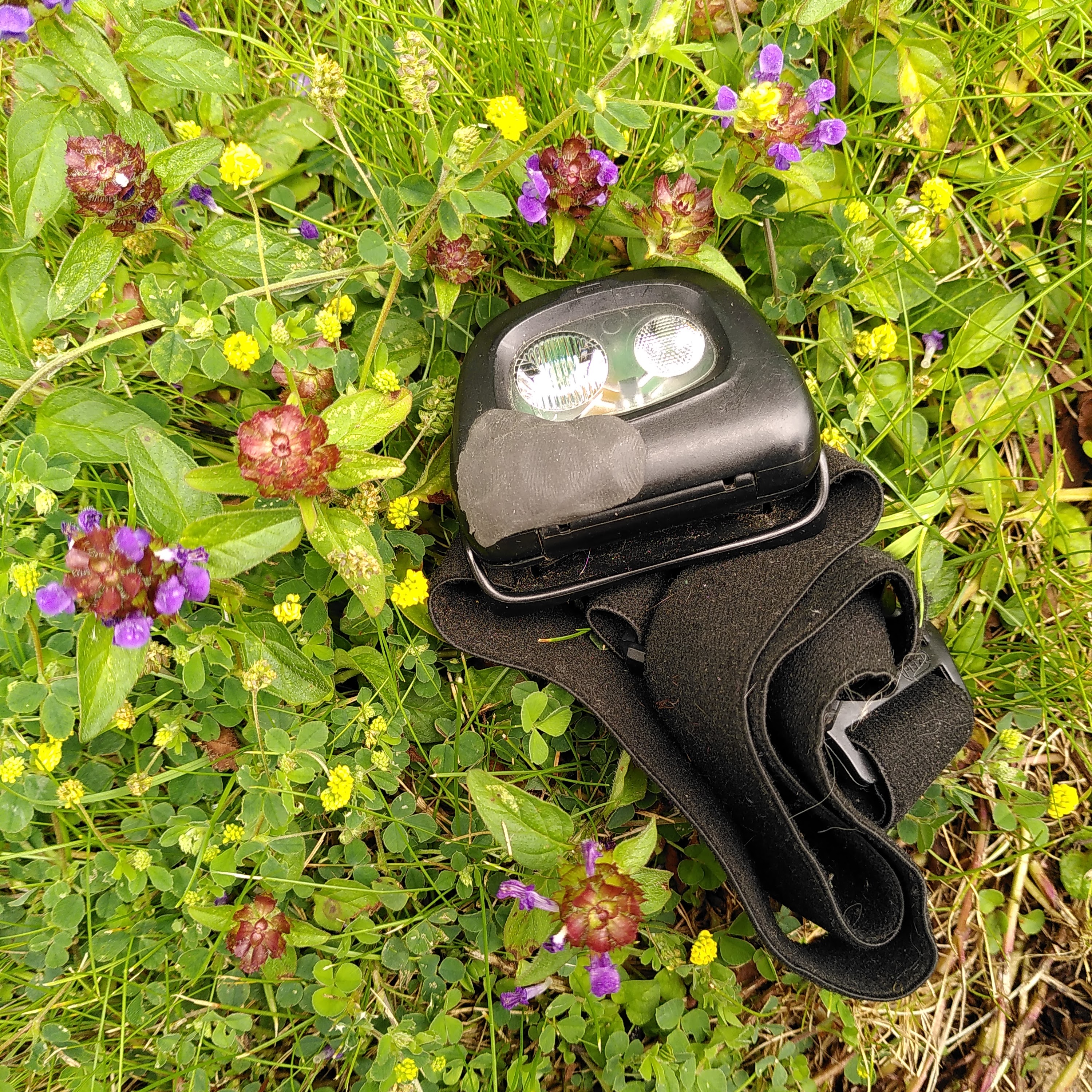
As always though, it’s better to extend the life of an item you already have than to buy a new one even if it is less damaging. I’m still using the battery powered headtorch I bought over a decade ago, having fixed a crack in the side with Sugru – it’s not exactly an attractive mend but it does the job.
Transport
I really can’t write a better guide to minimising the environmental impact of your journey to a festival than the Green Gathering has produced, and I’d urge everyone to read it. Their advice can be summarised as:
- Pack light – the more weight of luggage you carry, the more fuel is needed to transport that luggage. Try to buy food and drink from local producers near the festival if you can or on site.
- Travel by public transport. National Express runs coaches directly to some larger UK festivals and events, Trainsplit helps you to navigate the irrationality of the UK rail system and find out whether buying separate tickets would make a journey cheaper and if you’re traveling further afield Seat 61 offers information on train times and connections across the entire European train network.
- Red Fox Cycling offers organised cycling tours with baggage transport to various festivals from nearby cities, or of course you can cycle on your own!
- If you do plan to drive, sign up for a carshare service such as Liftshare.
Thank you for reading. I wish you all a safe, sustainable and above all fabulous festival camping experience.


